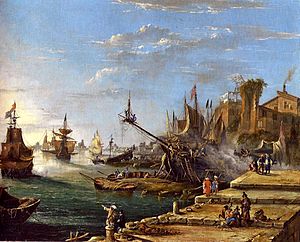
Back فن تشخيصي Arabic Art figuratiu Catalan Figurativní umění Czech Figurativ kunst Danish Figurative Kunst German Figura arto Esperanto Arte figurativo Spanish Arte figuratibo Basque هنر فیگوراتیو Persian Figuratiivinen taide Finnish
Figurative art, sometimes written as figurativism, describes artwork (particularly paintings and sculptures) that is clearly derived from real object sources and so is, by definition, representational. The term is often in contrast to abstract art:
Since the arrival of abstract art the term figurative has been used to refer to any form of modern art that retains strong references to the real world.[1]
Painting and sculpture can therefore be divided into the categories of figurative, representational and abstract, although, strictly speaking, abstract art is derived (or abstracted) from a figurative or other natural source. However, "abstract" is sometimes used as a synonym of non-representational art and non-objective art, i.e. art which has no derivation from figures or objects.
Figurative art is not synonymous with figure painting (art that represents the human figure), although human and animal figures are frequent subjects.
- ^ Tate. "Glossary:Figurative". Archived from the original on 3 February 2012. Retrieved 21 October 2012.

